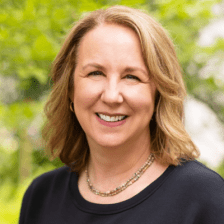In 2025, many of us in philanthropy are confronting an uncomfortable truth: the tools we’ve traditionally relied on to create positive change may no longer be enough. In recent months, we’ve seen urgent needs multiply. Promised federal funds have disappeared overnight. Community-based organizations are navigating heightened threats. Market volatility has made fundraising and budgeting more precarious than ever. In response, many foundations are increasing grantmaking—and that’s a necessary and admirable step.
But even bold grantmaking won’t fill the gaps left behind by systemic disinvestment. We must look beyond the checkbook and ask: What else can we do? At The Russell Family Foundation (TRFF) and the Woodcock Foundation, we have been deploying impact investing as an essential philanthropic tool, not as a niche strategy or a feel-good add-on, but as a fundamental shift in stewarding all the resources entrusted to us.
An Important Tool to Meet the Moment
TRFF and the Woodcock Foundation embrace a framework we call total resource activation—one that recognizes that foundations can advance their mission through grant capital, social capital, and investment capital. Both TRFF and Woodcock use thematic and catalytic investments. Thematic investments further focus the foundation’s portfolios on specific categories that align with their missions. For example, TRFF invests in themes such as sustainable forestry, agriculture, clean tech, affordable housing, and more. Moreover, those investments are place-based and deploy capital in the Pacific Northwest—the region where TRFF does the majority of its grantmaking.
Catalytic investment opportunities have the potential for outsized environmental or social returns. These investments may be higher risk or might have lower return expectations in the short term, but are business models that the foundations believe are truly innovative and transformative. Often included in this bucket are first-time funds, direct investments, and new business models that advance social and environmental goals. In some cases, catalytic investments can also catalyze change in the broader investment marketplace, such as proving that a particular customer base is bankable or supporting a proof-of-concept fund that is then able to raise conventional capital at scale.
Impact Investing at The Russell Family Foundation
TRFF has strategically employed impact investing as a tool to effectively address funding gaps that traditional grants alone cannot fill. By deploying a range of financial tools, TRFF has enhanced its support for grantees, fostering sustainable, long-term impact. The following examples illustrate TRFF’s commitment to using impact investments to address complex funding needs and support grantees more effectively. By deploying diverse financial tools—including bridge loans, loan capital, and loan guarantees—and fostering collaborative relationships, TRFF is positioned to meet its mission in relationship with its partners.
- TRFF awarded $100,000 in grant funding and $500,000 in loan capital to Business Impact Northwest, a nonprofit community development financial institution (CDFI). This combined funding supported BIN’s efforts to provide small business loans and technical assistance to underbanked entrepreneurs, including veterans, people of color, rural business owners, farmers, first-generation immigrants, and the LGBTQ+ community.
- TRFF invested in Forterra Strong Communities’ efforts to acquire land in Seattle and Tacoma at risk of market-rate development. By applying site restrictions, the fund ensures future developments are community-oriented, preserving affordable housing and community spaces.
Beginning with a $1 million allocation to impact investing in 2005, TRFF’s portfolio is now about 95 percent mission aligned. TRFF has also gone further in recent years—publicly sharing its investment policy statement, launching a catalytic climate finance program, and committing to net-zero portfolio emissions. These aren’t symbolic gestures; they’re part of a belief that values-aligned investing is no longer optional.
Impact Investing at the Woodcock Foundation
The Woodcock Foundation began exploring impact investing more than 20 years ago. After experimenting with different approaches, in 2020, it formally committed to 100-percent mission alignment across our endowment. The foundation’s investment policy statement includes a catalytic capital allocation, allowing it to double the impact-first capital it deploys.
Like TRFF, the Woodcock Foundation’s impact investments often complement its grantmaking. A longstanding relationship with REDF—supporting employment pathways for people facing systemic barriers—illustrates what this looks like in practice. Pairing grants to REDF with an investment in the organization’s fund helped the organization scale its impact and create a certified CDFI. Today, with uncertainty surrounding federal funding and more restrictive loan underwriting policies for SBA loans from the government, REDF is positioned to fill gaps and meet the needs of entrepreneurs by providing flexible financing backed by private impact investors.
Many of Woodcock’s investments are not directed toward its grantees, but rather to other social enterprises and funds whose objectives are aligned with the foundation’s program goals. The foundation has made several investments that enable other nonprofits and communities to be more resilient in challenging times, like the ones we face today. For example:
- The Boston Impact Initiative, which invests in community ownership and wealth creation strategies that make communities more economically resilient.
- Through the NH Community Loan Fund, a CDFI, Woodcock made a loan to support resident ownership of manufactured home parks, which stabilizes rents, establishes community governance, and increases economic resilience of residents.
What We’ve Heard and What We’ve Learned
As more foundations begin exploring this path, we hear a few common questions:
- Is this really the right time, given how volatile the markets are?
We think it is. Resilience is built by investing in companies, communities, and funds that are prepared for long-term risks—including environmental and social ones. - Do we need to be experts to get started?
No. You don’t need all the answers to take a first step. Both TRFF and Woodcock began small—testing, learning, and partnering with trusted advisors. - Won’t this complicate our operations or our oversight?
Not necessarily. For both of us, this journey brought more clarity and purpose to our investment conversations, and often deepened board engagement. - Will we have to sacrifice financial return as a tradeoff for impact?
Again, not necessarily. While TRFF and Woodcock both use catalytic investments, the majority of our portfolios continue to seek competitive financial returns while aligning with our mission. In fact, the Global Impact Investing Network reports that most impact investors seek a market-rate return.
Advice for Other Funders
If you’re ready to start—or ready to go deeper—here are a few things we’d share:
- Begin with a question. Invite your board to explore: What would it mean to align our investments with our mission?
- You don’t need to move the whole endowment. Many foundations start with a carveout, screening of investments, and moving cash to a banking partner aligned with your foundation’s mission.
- Use your peer network. Learn from others who are already in motion. You don’t have to do this alone.
- Remember your values. Aligning your investments with your mission isn’t a departure from fiduciary duty—it’s a deeper expression of it.
- Just start. There are many places to get started. Pick the tool or approach that feels right for you, and get started. Instead of expecting perfection, embrace learning opportunities and expect to deepen your connection to your mission and values.
The philanthropic sector is at an inflection point. NCFP’s 2025 Trends Report shows that one in four family foundations is now exploring or practicing mission-related investing. And yet, Bridgespan recently found that even among committed foundations, only about five percent of assets are typically mission-aligned.
The opportunity to do more—and do better—is right in front of us. Whether you’re in the early stages or refining a long-standing strategy, there’s value in doing this work together. For those of you who are already engaged in impact investing and want to learn more, we invite you to join us as members of NCFP’s new Impact Investing for Advanced Practitioners Peer Network. It’s a place to learn, ask questions, share challenges, and take action.
At TRFF and Woodcock, this journey has helped us activate all of our assets and better reflect the values we hold. The future of philanthropy goes well beyond grantmaking—it’s about all the philanthropic tools that can be deployed. Let’s use them.
The views and opinions expressed in individual blog posts are those of the author(s) and do not necessarily reflect the official policy or position of the National Center for Family Philanthropy.

